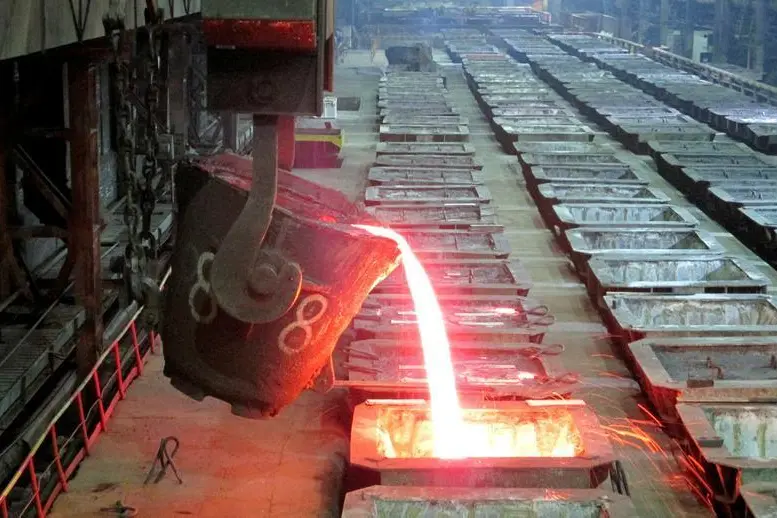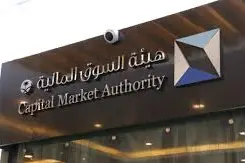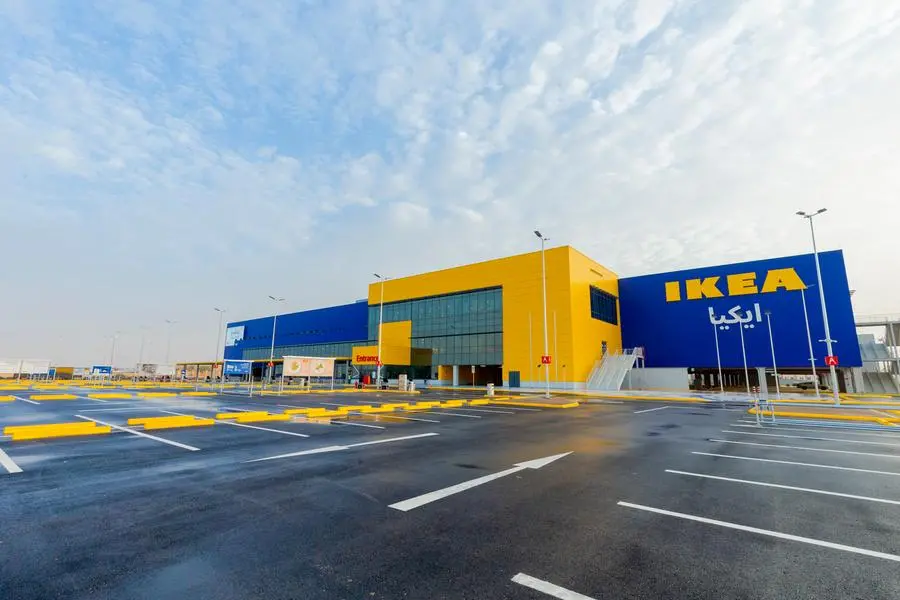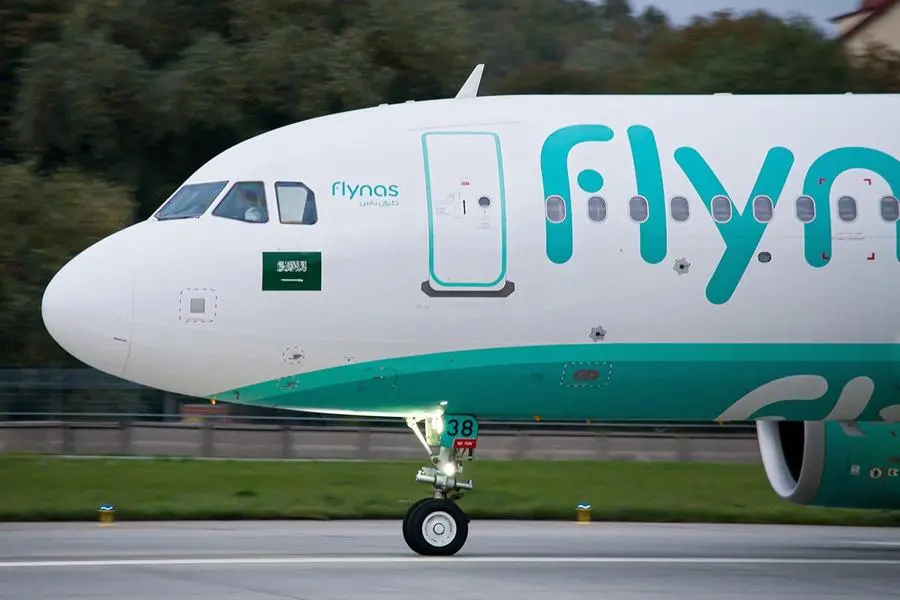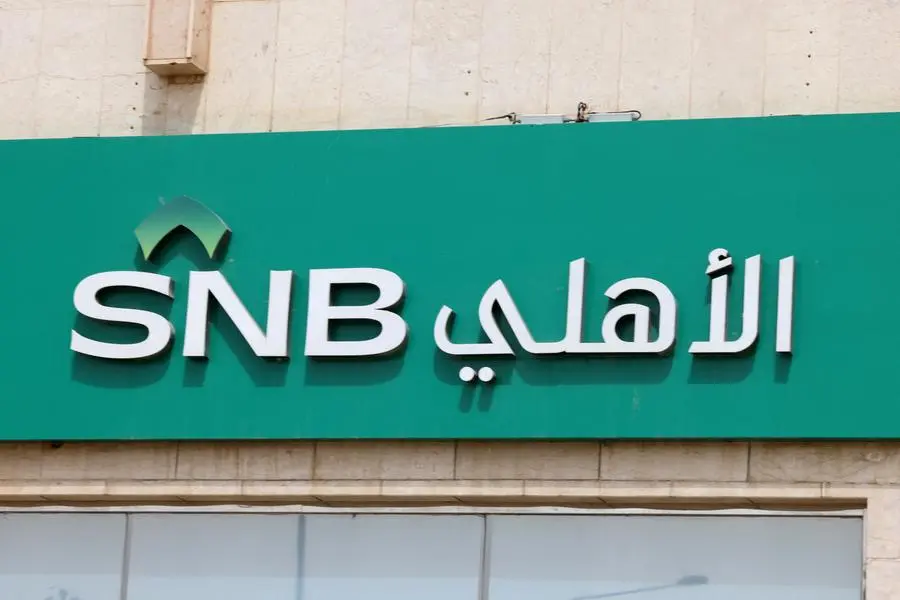PHOTO
Molten nickel is poured at Nadezhda Metallurgical Plant of the Norilsk Nickel company in the Arctic city of Norilsk January 23, 2015. Polina Devitt, Reuters Image used for illustrative purpose
LONDON - The London Metal Exchange's (LME) suspension of its nickel contract in March has led to a sharp drop in metals trading activity.
Total LME volumes slumped by 21% over the second quarter relative to the first three months of 2022.
Nickel was unsurprisingly the biggest casualty with the Shanghai Futures Exchange (ShFE) nickel contract also going into deep freeze.
But the chill effect has spread through all the LME's core base metals products in the last three months, suggesting an exit by institutional players unhappy with the exchange's cancellation of nickel trades, a decision that is now being challenged https://www.reuters.com/markets/commodities/lme-nickel-lawsuits-are-about-principle-much-money-2022-06-09 in the British legal system.
The LME's nickel woes are interwoven with bigger macro trends.
COVID-19 lockdowns depressed Shanghai trading volumes across both base and steel contracts in the first half of the year.
Fears of recession are currently generating a much broader investor exodus from the commodity sector, ironically just as retail players seem to be getting an appetite for industrial metals.
BROKEN NICKEL
The LME's nickel contract limped back into life after six days of suspension but volumes have been much reduced ever since.
Average daily volumes near halved in the wake of the fateful intervention on March 8. May's tally of 40,177 lots (both futures and options) was the lowest since January 2012.
Nickel's liquidity drain has been even starker on the Shanghai Futures Exchange (ShFE), which saw first-half trading volumes collapse by 69% year-on-year. Open interest at the end of June was 95,914 contracts, compared with 227,738 a year earlier.
LME nickel futures open interest fell to 160,528 lots in May, its lowest level since 2012, when the global market nickel was much smaller.
U.S. exchange CME Group has an ever-growing number of metals contracts but not a nickel one - yet - which means that falling participation in both London and Shanghai poses some serious long-term questions over how the industry, particularly the fast-expanding battery sector, wants to hedge its price exposure.
RIPPLE EFFECT
Other core LME contracts such as aluminium, copper and zinc have also seen open interest slide since March, a risk-off ripple effect spreading out from the nickel chaos.
Headline LME volumes were down by only 1.9% year-on-year in the first six months of 2022 - and just 1.1% on an average daily basis - but that masks a tale of two quarters.
Trading activity was strong in both January and February and even by the end of March headline volume growth was running at 9.5% year-on-year.
All that changed in the second quarter and by the end of June the only core contracts still showing year-on-year growth were zinc (up 7.2%) and lead (up 1.5%).
The collateral damage has so far been limited to the base metals and not steel trading.
Indeed, the LME's two best volume performers in the first half of the year were its steel rebar contract, up 83%, and its steel scrap contract, up 31% on the same period of 2021.
CME's ferrous contracts also saw strong across-the-board volume growth in January-June.
Steel futures are still a relatively recent evolution outside of China but appear to be building momentum on both sides of the Atlantic.
LME steel volumes, however, are still small relative to the main established base metals contracts, which is where market participation has dwindled over the second quarter.
The March nickel mayhem has played a decisive role but the trend of falling market open interest dates back at least a year and in the case of copper a lot longer.
WHO'S AFRAID OF DOCTOR COPPER?
LME copper open interest has been trending broadly lower since 2015 and that on the CME's copper contract since 2017.
LME copper volumes have fallen every year since 2018 and were down by another 7.6% in the first half of 2022, the weakest performance among the major contracts, even nickel.
The CME copper contract fared worse, futures volumes tumbling 27% with only partial mitigation from higher options activity.
Shanghai experienced a 48% slide in copper futures activity, also partly offset by a boom in options trading, where volumes rose by 30% and exceeded one million lots for only the second time ever in June.
Indeed, copper trading activity has been falling pretty much in tandem across the LME, the CME and the Shanghai markets every month since July 2021.
Copper's spectacular COVID-19 price recovery from under $5,000 per tonne in the first quarter of 2020 to the early March peak of $10,727.50 appears to have actively deterred participation on all three major global trading hubs.
This is curious given Doctor Copper's historical popularity with investors as a proxy for economic growth, a highly moveable and tradeable target since the onset of the coronavirus early in 2020.
Nor does it say much about the amount of buy-in to copper's longer-term bull narrative as key energy transition enabler.
There are signs, however, that retail investors may be venturing where big-hitter funds are fearful to tread.
MINI EXCITEMENT
One small part of the metallic trading universe is growing fast, even while activity in the major exchange contracts languishes.
Hong Kong Exchanges and Clearing (HKEx), which owns the LME, launched its "mini" base metal contracts in August 2019, smaller versions of the 25-tonne contracts traded on the London market.
The dollar-denominated products saw volumes more than double to 417,545 contracts last year and they rose a further 51% in the first half of this, with liquidity concentrated on zinc, aluminium and copper in that order.
The contracts are aimed squarely at investors, particularly retail players looking for a slice of the metals trading pie.
So too is the CME's new "micro" copper contract, a tenth of the size of the exchange's prime copper contract, "conveniently sized and tailored for the individual investor", according to the CME website.
The contract was only launched in May but has already notched up 130,331 trades and had 1,157 lots of open interest at the end of June.
The LME gave up on mini contracts in 2013 after three years of lacklustre trading, but it seems that nearly a decade later their time has come as retail players look for a way into the industrial metals trading arena.
The opinions expressed here are those of the author, a columnist for Reuters
(Editing by David Evans)
